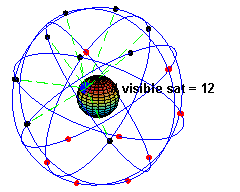Conant Science & Math Lecture Hall (Room 120)
 |
| Photo of Geographer Extraordinaire Jeff Anzevino taken by Dr. Hayes-Bohanan on Jeff's boat this summer. The famous Good Ship Clearwater is in the background, with the Walkway Over the Hudson beyond. Read about that visit on Environmental Geography. |
A Geographer’s Perspective on
Revitalizing Hudson Riverfronts
Revitalizing Hudson Riverfronts
Jeff Anzevino, Scenic Hudson & Marist College
Jeff Anzevino will speak about his role as a geographer and planner in
helping to connect the wildly successful Walkway Over the Hudson State Historic
Park (www.walkway.org) with the struggling
communities of Poughkeepsie and Highland.
In his role as Director of Land Use Advocacy for Scenic Hudson (www.scenichudson.org), Jeff coordinates
initiatives brand Poughkeepsie and Highland in association with Walkway Over
the Hudson. He was been a long-time proponent of the adaptive reuse of the
abandoned 1888 Poughkeepsie Railroad Bridge into the recently opened park that
will eventually connect dozens of miles of rail trails across Ulster and
Dutchess Counties and will eventually reach New York City.
At 1.28 miles long and soaring 212 feet above the Hudson River, Walkway
is one of the highest and longest pedestrian bridges in the world. Jeff will describe
how a diverse group of business and environmental organizations have come
together to promote Walkway as a catalyst for more livable communities and
economic opportunity on either side of the bridge.
Walkway Over the Hudson is at the nexus of an emerging network of trails
that connect people to and along the Hudson River. Establishing these types of connections is
one of the strategies recommended in Revitalizing
Hudson Riverfronts (www.revitalizinghudsonriverfronts.org),
an award-winning riverfront planning guide he co-authored in 2010.
Jeff will explain how a multidisciplinary approach to planning for riverfront
development is essential to the protection property, infrastructure and natural
resources from rising sea levels and other consequences of climate change. This
work has been ongoing for several years, but has attracted particular attention
in the wake of Super Storm Sandy.
Biography
Jeff’s love of geography stems from his aunt and uncle who took many
road trips across the country and brought him gas station road maps which
sparked his imagination of far-off places.
As a kindergartener, “Geography Jeff” was teased by the big kids because
he had learned every state capital from a map puzzle. Undeterred by the teasing,
Jeff realized he could study geography in college and went on to earn a living
while realizing a lifelong dream of using his geographic skills to make the
Hudson Valley a better place to live, work, and play.
Jeff earned three related associates degrees (geography, cartography,
and community planning) at Montgomery College before earning his BA in
geography (cum laude) at the University of Maryland Baltimore County in 1985.
(The geography department at UMBC was both the undergraduate home of BSU’s Dr.
Hayes-Bohanan and a former employer of BSU’s Dr. Amey.)
He then worked as a planner in Cape Coral, Florida and a GIS manager at
RoadNet Technologies, a subsidiary of United Parcel Service in Hunt Valley,
Maryland. In 2003 he earned accreditation from the American Institute of
Certified Planners (AICP).
Jeff has worked as a planner for Scenic Hudson for over 20 years, and in
2010 he was promoted to Director of Land Use Advocacy. He leads a team of three
planners helping communities ensure that riverfront development stimulates the
economy, connects people with the river, and conserves views and natural resources.
In 1993 Jeff founded the Hudson Valley Bluegrass Association, a 501(c)3
arts and educational organization and owns a small business specializing in
maritime art photography. He is an avid musician,
sailor, bicyclist, hiker, kayaker, cook, and gardener.
He has served as an
adjunct instructor of Environmental Planning at Marist College since 2011.












































